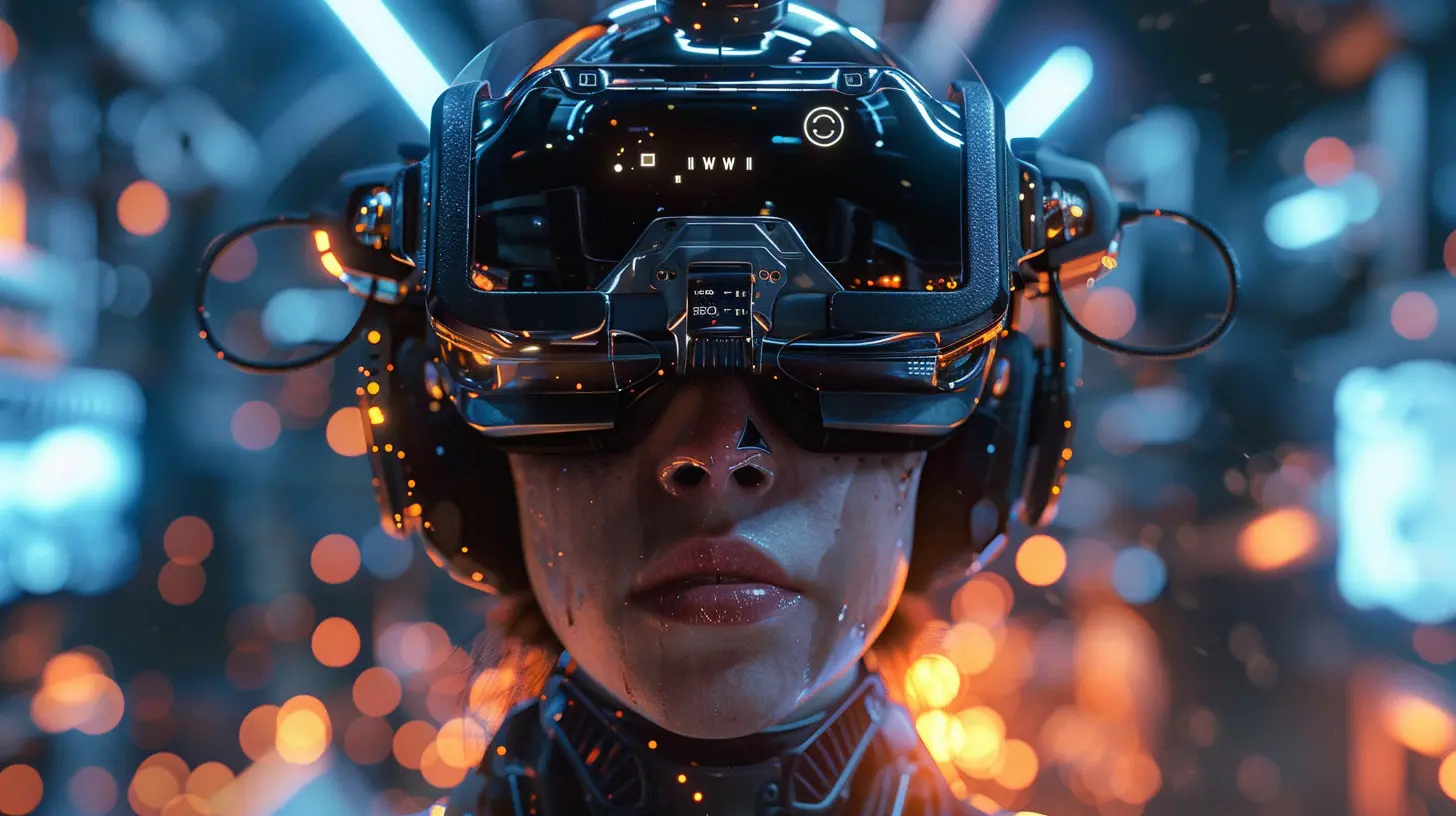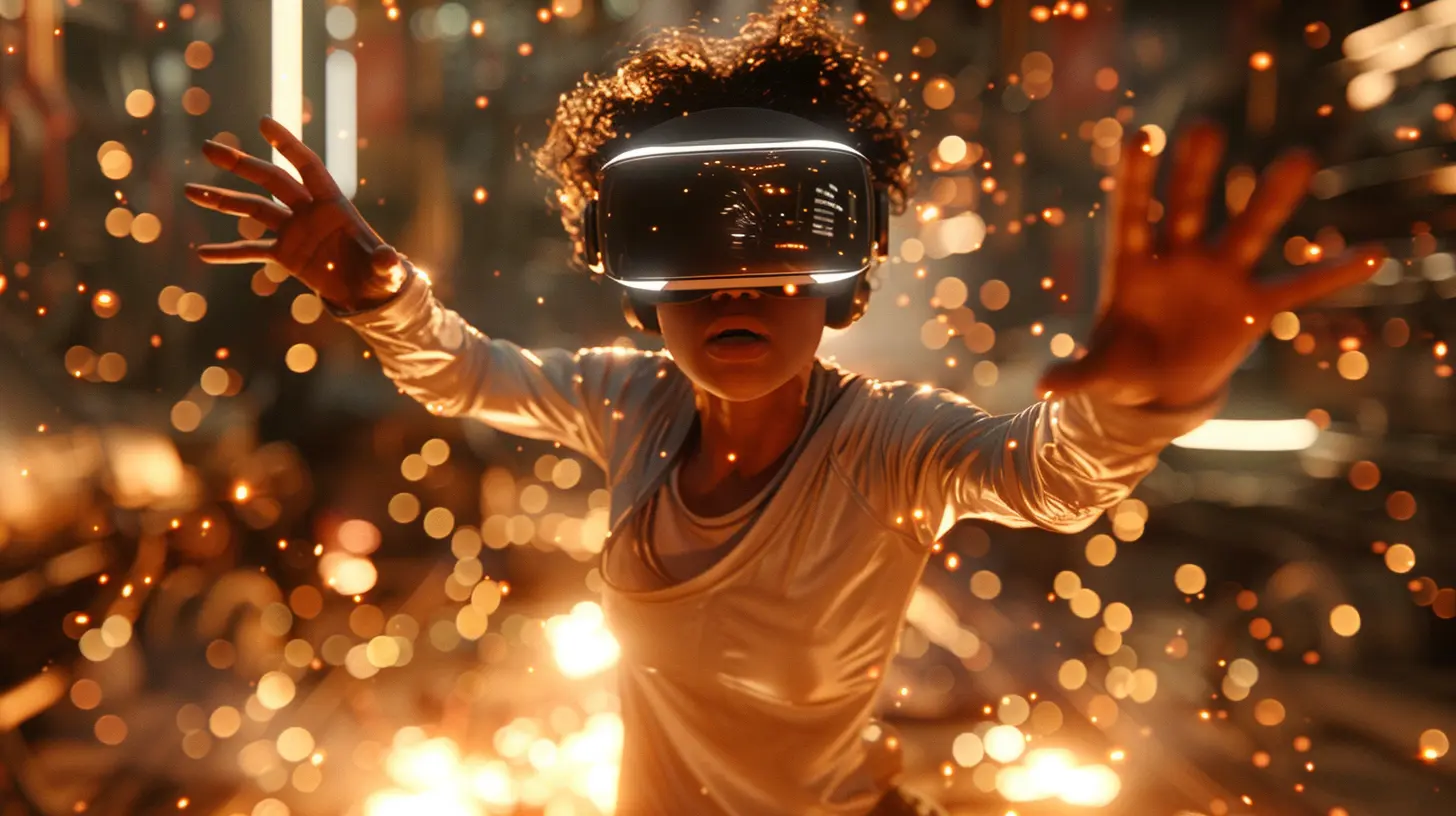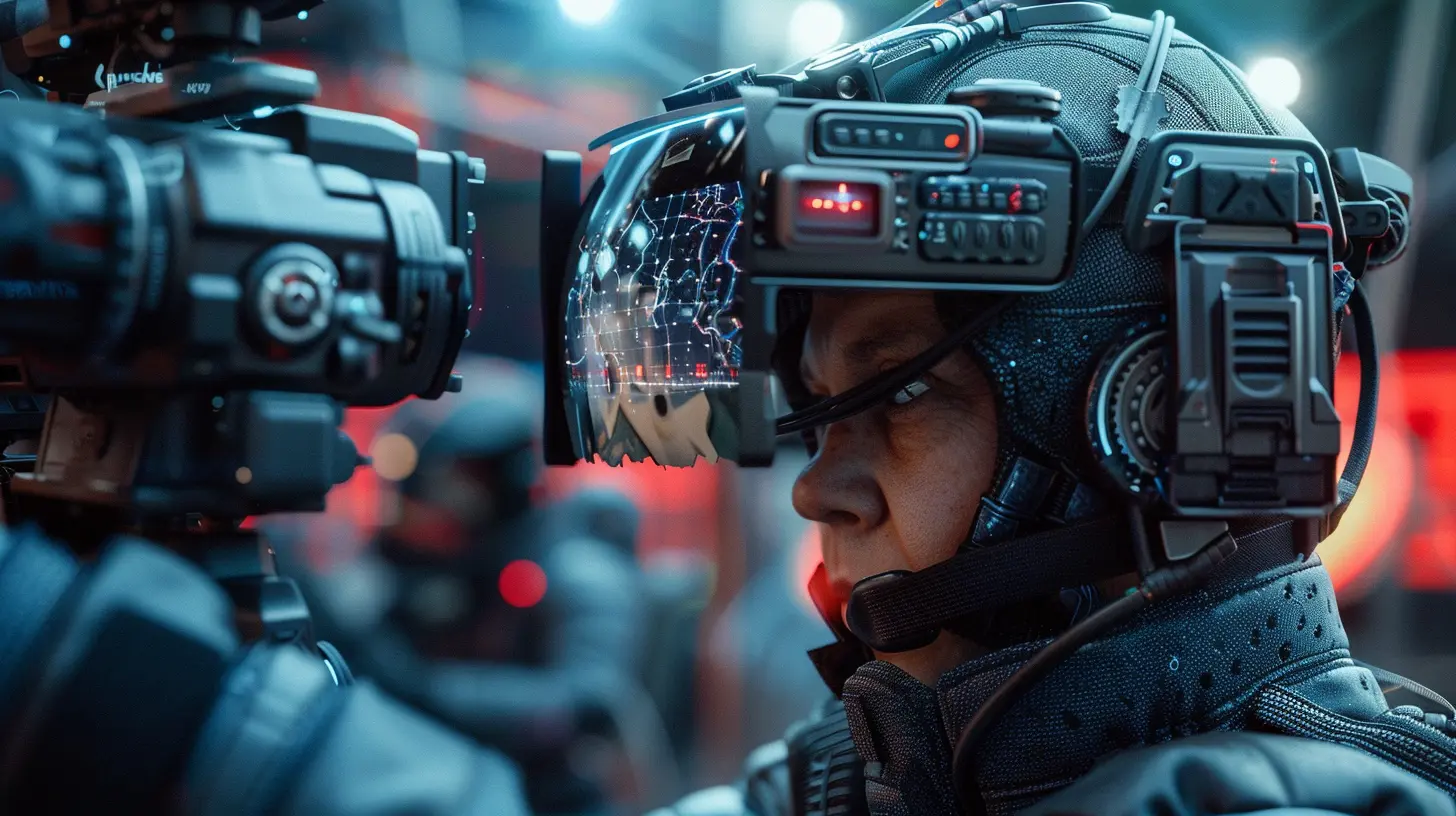Creating Realistic Physics in Virtual Reality Games
12 May 2025
Virtual reality (VR) gaming has come a long way—gone are the days when clunky graphics and awkward controls would break the immersion. Now, developers are crafting expansive virtual worlds so lifelike that you might forget you’re even wearing a headset. But let’s be honest, no matter how detailed the environment is, if the physics don’t feel right, the illusion shatters. Jump too high, fall too slow, or watch an object clip through a wall, and you’re back in reality faster than you can say, “Where’s my controller?”
So, how do developers create realistic physics in VR games? It’s not magic—it’s science and a whole lot of creative problem-solving. Let’s dive into the nuts and bolts of what makes VR physics tick and how developers are rewriting the rules of gravity and momentum to keep you in the game—literally. 
What Do We Mean by "Realistic Physics" in VR?
Alright, first things first: what does "realistic physics" even mean in the context of VR? In simple terms, it’s about mimicking the laws of the real world—gravity, friction, collisions, and momentum—in a digital environment. When you toss a virtual basketball, it’s supposed to arc through the air and (hopefully) swish through the net, just like it would in real life.In traditional console or PC gaming, physics is important, but you’re interacting with the game through a screen. In VR? You’re in the game. That means physics isn’t just a neat detail—it’s the glue holding the entire experience together.
Think about it: if you’re picking up a virtual mug, you expect it to feel like it has weight, and when you drop it, you want it to smash (because let’s face it, smashing stuff is fun). It’s the difference between feeling like an invisible observer and genuinely believing you’re a part of that world. 
The Building Blocks of Realistic VR Physics
Realistic physics in VR isn’t just about code—it’s about creating an experience that tricks your brain. And trust me, brains are picky. Here are some of the core elements that developers have to get just right:1. Gravity: Keeping You Grounded
Gravity’s a no-brainer, right? You throw something up, it comes back down. But replicating gravity in VR isn’t as straightforward as it seems. Developers need to calculate how objects move through space, how fast they accelerate when falling, and how they interact with the ground.What’s wild is that tweaking gravity can completely change the feel of a game. Want to create a moon-walking experience? Lower the gravitational pull. Want players to feel superhuman? Reduce fall speeds and let them jump higher. The trick is finding the balance between fun and realism.
2. Collisions: Making Stuff Solid
Ever played a VR game where your hand goes straight through a wall? Yeah, not great. Collision detection ensures that virtual objects feel solid. When you bump into a table, your controller vibrates, and the table doesn’t just vanish into thin air.But collision physics in VR goes deeper than just walls and furniture. Developers also have to account for how objects react when they hit each other—should they bounce, break, or just stop moving? It’s a delicate dance to make everything behave naturally.
3. Momentum: Adding Weight to Movements
Momentum is what makes throwing, catching, and pushing objects feel right in VR. Without proper momentum physics, a virtual bowling ball might feel like a feather—or worse, like nothing at all.Games like Boneworks and Half-Life: Alyx are fantastic examples of nailing momentum. They use advanced algorithms to simulate how heavy objects should behave when moved or thrown. You don’t just see the weight—you feel it.
4. Friction: Slowing Things Down
Friction is one of those details you might not actively notice until it’s missing. It’s what keeps your shoes from sliding on the ground and makes objects stop rolling after a while. In VR games, friction has to be fine-tuned to match the materials of the objects in the game. A ball rolling on grass? It should slow down quickly. On ice? Let it slide, baby!
Tools of the Trade: Technology That Powers VR Physics
Now that we’ve covered the basics, let’s talk about the tools and technologies developers use to create realistic physics in VR games.1. Physics Engines
Physics engines are software frameworks that handle all those gravity, collision, and momentum calculations. Some of the most popular ones include:- Unity’s PhysX (powered by NVIDIA): This is like the Swiss Army knife of physics engines—super versatile and used in a ton of VR games.
- Havok Physics: Known for its realistic simulations, Havok is a go-to for games that prioritize immersion.
- Bullet Physics: Lightweight but powerful, Bullet is great for VR experiences that require precision.
These engines allow developers to focus on creativity while letting the software handle the heavy lifting.
2. Haptic Feedback
Haptic feedback is the buzz or vibration you feel through your controller when interacting with objects in VR. It’s not just a gimmick—haptics are crucial for selling the illusion of touch. Developers program different vibration patterns to match the feel of various surfaces, adding a tactile layer to your virtual experience.3. Inverse Kinematics (IK)
IK is all about making your movements in VR look natural. When you reach out to grab something, the game needs to calculate the position of your virtual arm and hand in real-time. This way, what you see in the game matches what your body is actually doing. It’s harder than it sounds, but when done right, it’s pure magic.
Challenges of Creating Realistic Physics in VR
Let’s be real—creating realistic physics in VR is no walk in the park. There are plenty of challenges developers face along the way:1. Hardware Limitations
Not everyone has a high-end gaming PC or the latest VR headset. Developers have to work within the constraints of lower-end hardware while still delivering convincing physics.2. Motion Sickness
Get this: overly realistic physics can sometimes cause motion sickness. If the in-game movement doesn’t perfectly sync with what your body expects, your brain goes, “What the heck is going on?” Striking the right balance is absolutely essential.3. Complex Interactions
Ever tried stacking objects in a VR game, only for the whole pile to collapse for no reason? Simulating complex interactions—like stacking, balancing, or intricate hand movements—is incredibly tricky. It’s an area where many VR games are still catching up.4. Player Freedom
Unlike traditional games where players follow a set path, VR lets you interact with the environment in countless ways. This unpredictability makes it harder for developers to anticipate exactly how players will behave, which means they have to test everything.The Future of VR Physics
So, what’s next for VR physics? As technology improves, we’ll likely see even more realistic and immersive experiences. Here are a few trends to keep an eye on:1. AI-Driven Physics
Artificial intelligence could be used to predict and respond to player movements, creating even more lifelike interactions. Imagine a game where objects react not just to your touch but also to your intent.2. Full-Body Tracking
Right now, most VR games track your head and hands, but full-body tracking systems are on the horizon. This could open up a whole new world of physics-based gameplay, from kicking virtual soccer balls to doing backflips (if you’re feeling brave).3. Tactile Interfaces
Gloves and suits with tactile feedback are becoming more affordable, and they could revolutionize how we experience physics in VR. Imagine feeling the texture of an object or the impact of a punch—it’s next-level immersion.Why Realistic Physics in VR Matters
At the end of the day, realistic physics isn’t just about making games look good—it’s about making them feel right. It’s what keeps you from getting yanked out of the experience and lets you lose yourself in a world that feels as tangible as your own.Whether you're fighting off waves of zombies, exploring alien planets, or simply playing virtual catch, physics is the invisible hero making everything click. So next time you marvel at a perfectly arcing throw or the way a box crumbles when you smash it, give a little nod to the developers—they’ve earned it.
all images in this post were generated using AI tools
Category:
Virtual RealityAuthor:

Whitman Adams
Discussion
rate this article
5 comments
Shannon King
Great insights on physics in VR! Realism truly enhances immersion and player experience.
May 20, 2025 at 1:04 PM

Whitman Adams
Thank you! I’m glad you found the insights valuable—realism is indeed key to enhancing immersion in VR.
Gianna Stone
Implementing realistic physics in VR enhances immersion, bridging the gap between virtual experiences and reality. It challenges developers to balance complexity with performance for optimal gameplay.
May 19, 2025 at 4:48 PM

Whitman Adams
Thank you for your insightful comment! Striking that balance between realism and performance is indeed crucial for enhancing immersion in VR.
Amy Hurst
Realistic physics enhance immersion; fine-tuning interactions and responses is key to improving player experience in VR.
May 16, 2025 at 2:45 PM

Whitman Adams
Thank you! I completely agree—realistic physics are crucial for immersion, and fine-tuning interactions truly elevates the player experience in VR.
Daniella Sawyer
Impressive realism enhances immersion!
May 13, 2025 at 2:52 PM

Whitman Adams
Thank you! We're glad you found the realism enhances immersion—it's a key focus in our work!
Lisa Mercado
This article provides valuable insights into enhancing immersion through realistic physics, elevating the overall VR gaming experience.
May 12, 2025 at 4:27 PM

Whitman Adams
Thank you! I'm glad you found the insights helpful for enhancing immersion in VR gaming.
MORE POSTS

How Players Interact with AI Voice Performances in Open-Ended Games

How to Clean and Maintain Your Gaming Keyboard

What Role Does Localization Play in Expanding Global Game Markets?

Embracing the Unseen: The Role of Peripheral Vision in VR

How Beta Testing Creates Communities and Friendships Among Players